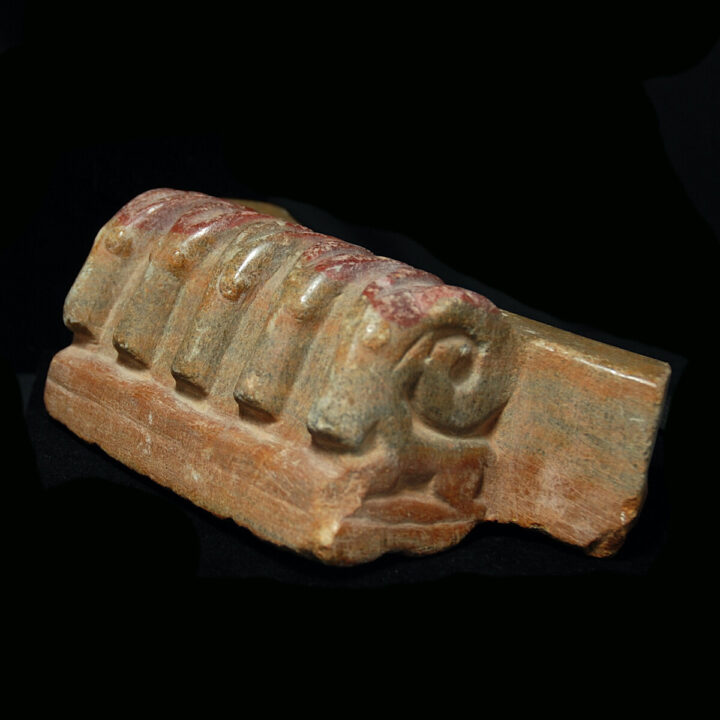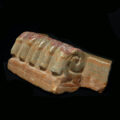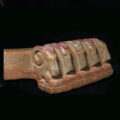Sabaean Ibex Frieze Altar of Banded Alabaster
Culture: South Arabia/Sabaean
Period: 4th-3rd century B.C.
Material: Alabaster
Dimensions: 7.4 cm x 19.8 cm
Price: Sold
Ref: 6428
Provenance: From the private estate of the Parisian art dealer François Antonovich (1934-2023), acquired in the 1970s.
Condition: Unrestored
Description: High-quality worked out alabaster frieze with five stylized ibexes, which formed the finale of an altar plate or an offering table. The ibexes are set en face next to each other. The banded alabaster was selected in a way that the animal horns shine in red. The sculptural heads are oversized and end sharp-edged at the bottom. The eyes are round and button-like. The entire animal body with the rolled in horns only reveals itself from the side. Worked in flat relief, the body is way too small in relation to the head, which is typical for the Sabaean art, which always focuses on the head. Ibex friezes are used as decorative elements also in the architectural structure of sacral buildings, for example in the Bar’an temple in Ma’rib. In addition to being a symbolic animal for various South Arabian deities, the ibex also represents fertility. The selection of the stone, whose coloured grain provides structure to the animal depictions, makes this frieze a rarity. See for the type “Yemen – Kunst und Archäologie im Land der Königin von Saba”, Wilfried Seipel (ed.), No. 230, pages 319-320, as well as No. 234, pages 321-322.








